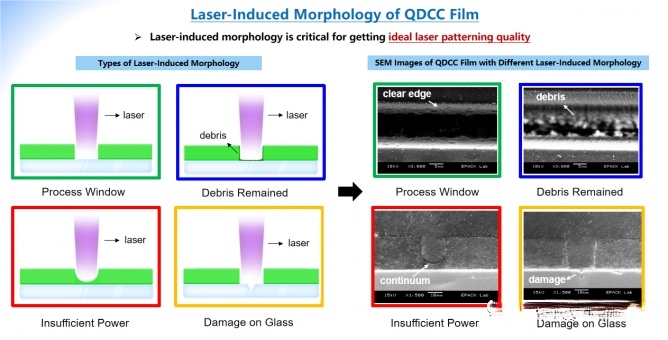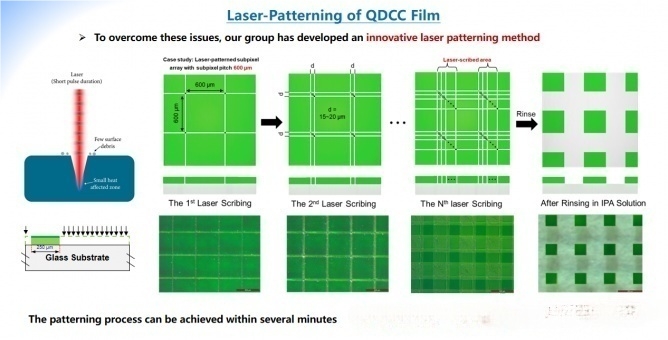BC type solar cells, that is, Back Contact solar cells, is a general term for various types of back-contact structural crystalline silicon solar cells, mainly including IBC, HBC (HJT+IBC), TBC (TOPCon+IBC), HPBC, etc. There is no grid line on the front surface of the solar cell, and the positive and negative electrodes are prepared on the back of the solar cell by cross-arrangement, which avoids the shading loss of the grid line on the front of the conventional solar cell.
Due to the characteristics of platform technology, the IBC solar cell preparation process is more variable than the traditional technical route, and laser technology can play a role in:
1) Slotting prepared by PN junction
2) PN area isolation slot,
3) Passivation film grooving before electrode preparation,
4) Laser doping and other multiple effects to achieve process simplification, thereby reducing costs and increasing efficiency, is one of the key equipment in the process of IBC industrialization.
Due to the high requirements for the precision process of the laser in the electroplating copper process, it is necessary to open a relatively fine tank without damage, and at the same time achieve better adsorption of subsequent copper ions, so the value of the single GW of laser equipment is high.
Laser grooving, laser transfer and other processes can effectively achieve cost reduction and efficiency improvement by saving slurry consumption & material consumption, and improving yield, which can be applied to IBC solar cell process.
New technologies such as IBC correspond to higher equipment accuracy process requirements, so the value of a single GW will be higher than that of PERC, and it is expected that the value of a single GW of about 10 million will be improved compared with PERC, bringing a broader long-term market space.
Laser grooving:
In the BC cell process, laser grooving has brought efficiency improvement and cost reduction.
Laser transfer:
The grid line is thinner, so the slurry saves more, and the same applies to low-temperature silver paste; Non-contact printing can avoid problems such as cracks, fragments, contamination, scratches and other problems in extrusion printing.
The BC solar cell structure has the following three advantages: first, there is no metal grid line blocking the front side, and the conversion efficiency is high; Second, there is no grid line on the front, which is very beautiful and especially suitable for distributed photovoltaic scenarios; Third, the versatility is good, TOPCon, HJT, PERC, laminated cells, etc. can be combined with BC technology, and the superposition process continues to expand the efficiency advantage.
But correspondingly, the challenge of BC solar cell manufacturing is also very large, the main difficulty is that all electrodes are on the back, and they need to be well isolated, otherwise they will be short-circuited if they are turned on. At present, the most economical way for Chinese companies to isolate is to use laser pattern processing. The use of laser patterning, rather than lithography or other processes to pattern, is very promising.
Research progress and achievements such as short-pulse laser ablation, laser-induced morphology of QDCC film, parameterization of laser patterning quality, laser patterning of QDCC film, scalable patterning of QDCC subpixel array, full-color QDCC layer of 5x5mm laser pattern, etc.


 Graphical: Direct writing lithography is expected to be the first to be scaled up
Graphical: Direct writing lithography is expected to be the first to be scaled up
Resolution, overlay accuracy and yield are the main performance indicators of lithography machines. The core equipment is the lithography machine, the performance indicators mainly include resolution (the degree of micronization of pattern transfer), overlay accuracy (position accuracy of pattern transfer) and yield (speed of pattern transfer), in which the resolution is directly limited by the numerical aperture of the projection objective and the wavelength of the exposure light source, the overlay accuracy is mainly limited by the measurement accuracy of the alignment system and the positioning accuracy of the workpiece table/mask table, and the yield is related to the power of the light source, the size of the exposure field, the stepping speed of the workpiece table and other factors.
In the early stage of copper electroplating industrialization, the silicon wafer size and grid line scheme were changeable, the mask board development cycle was long, benefiting from the advantage of pattern editing speed, and the industrialization of direct writing lithography was expected to be the first to be increased. In terms of accuracy, the accuracy requirements of photovoltaic applications are much lower than those of semiconductors, and both direct writing lithography and mask lithography can meet them; In terms of beat, direct writing lithography and mask lithography have acceleration methods to meet the needs of photovoltaic production beats; Long-term focus on the progress of cost reduction of both.
BC solar cell has the highest conversion efficiency, and can be combined with other solar cell processes to continue to expand the advantage, it is expected that more companies will layout in the future. At present, among the enterprises that choose the BC technology route, LONGi Green Energy and AIXU are the most representative. Among them, HPBC, which LONGi Green Energy has been researching since 2018, is an important direction in BC solar cells.
HPBC is the abbreviation of composite passivated back contact solar cell, and the mass production efficiency of the standard version of HPBC solar cell exceeds 25%. The solar cell technology can greatly improve the light absorption and photoelectric conversion capacity of the solar cell through the adjustment of the internal structure process of the solar cell, and effectively increase the output power of the module. On November 2, 2022, LONGi Green Energy released Hi-MO 6, a new generation of module products based on high-efficiency HPBC solar cell technology, with a mass production module efficiency of 23.3%.
The scale benefits of any technology must rely on the improvement of cost performance. Shen Wenzhong said that the P-type BC structure solar cell can use the technical process of aluminum paste in the future, which is the biggest highlight. The aluminum on the back can form a local aluminum back field with the P-type silicon wafer, and the foundation of the electrode can be realized by screen printing aluminum paste. P-type silicon wafers have the largest number of p-type silicon wafers in the world, the industrial chain is mature, and aluminum paste can be used instead of silver paste in the future, which is the best from the perspective of cost performance. Other N-type BC structure solar cells on the market choose electroplating copper technology, but the electroplating process itself is more complex and the cost is relatively high. "From the perspective of cost performance, I am more optimistic about the cost performance of P-type BC structure solar cells."
BC technology can be developed in China, and the driving effect of the leader cannot be ignored. It is reported that by the end of 2023, the 30GW HPBC production capacity expanded by LONGi Green Energy will be fully produced. Based on this, Shen Wenzhong judged that although many enterprises have not achieved industrialization, they are doing technology research and development, and after the demonstration role of leading enterprises has been played, BC technology will definitely be able to develop rapidly and will exceed the expansion speed of traditional solar cells.